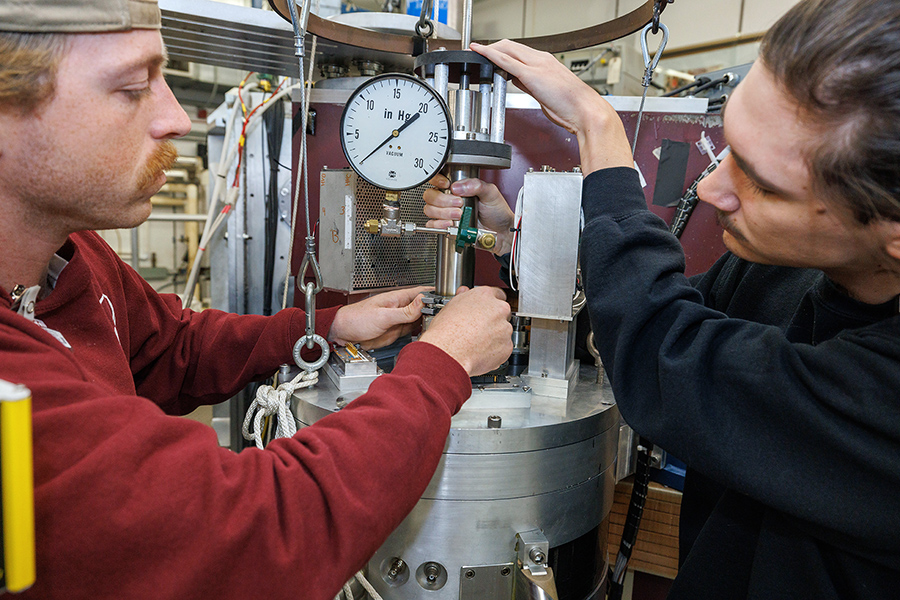Argonne principal nuclear engineer Thanh Hua has been working on helping to understand the operation of a new type of molten salt reactor currently being developed by Terrestrial Energy. Molten salt reactors were initially developed in the 1960s as an advanced alternative to water-cooled reactors. Terrestrial Energy’s reactor concept is called an integral molten salt reactor (IMSR) and requires no pressurized cooling systems. “Molten salt reactors have a number of advantages over today’s conventional reactors, such as passive safety features and higher thermal efficiencies,” Hua said.
One of the notable complexities of an IMSR is the mobility of the fission products which are the radioactive byproducts of creating nuclear energy from fission. These fission products include noble metals and noble gases. “The fission products travel freely throughout the primary fuel loop. Because noble gases and noble metals are insoluble in the salt, they can potentially leave the fuel salt and get into the environment in the event of a severe accident,” Hua said. “We need to understand the transport and the migration of these fission products to prevent the chance of a radioactive release.”
Hua and colleagues have recently received a DOE Office of Technology Transitions Technology Commercialization Fund (TCF) award to enhance Argonne’s computer code called SAM (System Analysis Module) that can help to model and simulate the production, transport and migration of noble gas and noble metal fission products in the IMSR. Currently, the SAM code is being used in many ongoing research and development activities to support the thermal hydraulics analysis of different types of advanced fission reactor designs.
“The goal of the project is to increase the technical maturity of the SAM code and provide a tool to Terrestrial Energy to help them in their licensing process with the Nuclear Regulatory Commission,” Hua said.
Hua’s research interests also go beyond IMSRs to include other “Gen IV” reactor types, including liquid-metal-cooled reactors, high-temperature gas-cooled reactors, and other molten salt types. Hua is also working with Moltex Energy on another salt-based reactor called a stable salt reactor.
Hua started his career at Argonne as a nuclear fusion researcher. “In my first year in college, I had a part-time job in a high school library. One day I saw a book on nuclear energy, and from then on, I was hooked on the subject,” Hua said.
Argonne National Laboratory seeks solutions to pressing national problems in science and technology by conducting leading-edge basic and applied research in virtually every scientific discipline. Argonne is managed by UChicago Argonne, LLC for the U.S. Department of Energy’s Office of Science.
The U.S. Department of Energy’s Office of Science is the single largest supporter of basic research in the physical sciences in the United States and is working to address some of the most pressing challenges of our time. For more information, visit https://energy.gov/science.



